Kick-ass personal branding on social media (creative guide)
Learn personal branding on social media with self-branding strategies on different social media channels, and build up your personal brand by being social.
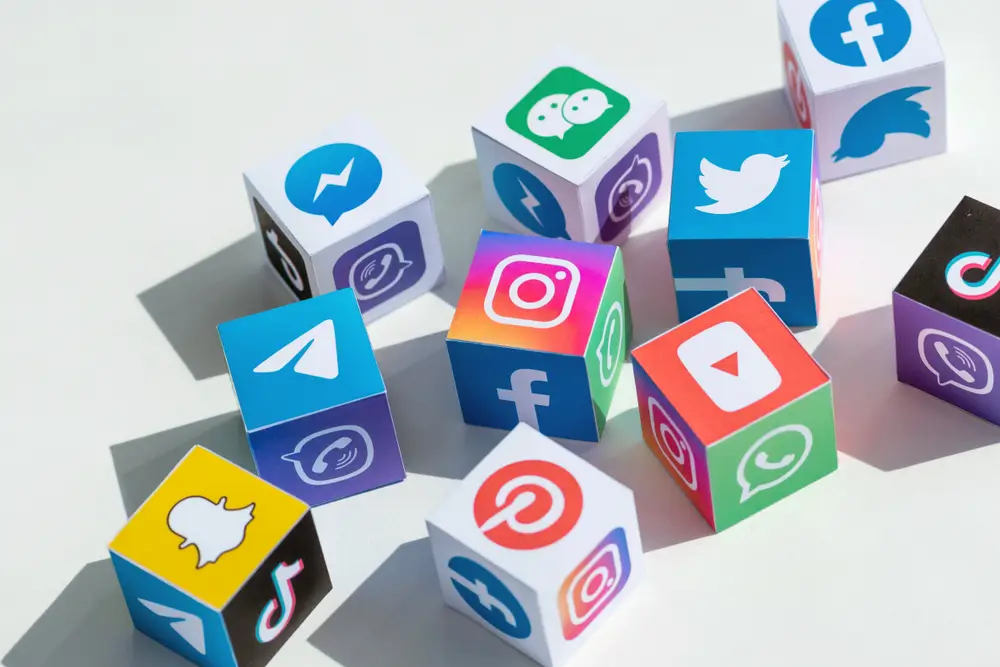
Too many people I know are attempting personal branding on social media, and they’re failing to build a following, let alone to monetize their social media. I assume that if you’re reading this, you too are making an attempt at branding yourself on social media. You to my very likely be doing it wrong. You may be failing, and you don’t even know it.
Honestly, Mastering personal branding on social media is pretty hard and a bit problematic. If nobody told you this yet, then I will, personal branding is hard work, it’s not a side hustle, it’s your job. In order to thrive in social media, you have to understand the basics of branding, networking, marketing, and above all, you have to know yourself and the unique value that you bring to the table.
This article will lay the foundations for self-branding on social media. Follow my instructions and put in the work, and you’ll create a successful lifelong personal brand you could actually live off.
Self-branding or personal branding is shaping the way that the public perceives you. Your personal brand is what people think of you, associate with you, or the images that are conjured when they come across your name. You want to communicate your personal brand to the world, and social media is one of the best ways to do that.
Benefits of self branding on social media
- Build new connections and networks.
- Attract new clients, customers, and partners.
- Discover speaking opportunities.
- Boost your credibility and authority.
- Earn recognition and trust. Establish an association with your niche.
- Increase your perceived value as a business person and thought leader.
Still not convinced? We go deeper into the benefits of self branding on social media near the end of this article.
16 things you have to do to create a successful lifelong personal brand on social media
If you’re trying to boost your personal brand on social media or looking for different self-branding strategies, we have 15 techniques that you can use to help you strengthen your personal brand on social media. So, let’s go!
1. Dig deep to determine your brand persona
Personal branding on social media means sharing your expertise, personality, and passion in a way that brings value to people’s lives.
If you don’t know where you stand out, and what aspect of your life or personality has added value to give, you’ll never succeed in social media. That’s why your first step should be identifying your area of expertise. Dig deep, and think hard; this will guide your self-branding for years to come.
Once you found things about yourself that you can build your personal brand around, narrow them down to a specific niche; it’s not enough to say that you’re a rockstar marketer or a yoga expert.
You will either need to be: A rockstar marketer for female solopreneurs, an expert on goat yoga, prenatal yoga, or Aerial yoga (yes, that’s actually a thing. Goat yoga, perhaps not.)
Here’s a great example: Laura Roeder, now the founder of two successful SaaS startups, makes it clear that her expertise is in teaching others to use social media in marketing.
If you’re not sure where your expertise lie, try to think about those times when people ask you for advice; what do they ask? If they need help, help in what? What are you known for? What do you know or do better than most people?
Narrow your list down to 1-3 areas of expertise, and then search them as keywords on social media channels to measure the kind of volume and interest around them. (If no one else cares about goat yoga, you won’t get very far.)
Personal branding social media on Twitter you can search as a hashtag and use advanced search to filter by language, location, or audience. You can also use a tool like RiteTag to see how different hashtags rank on social media or enter your keywords into BuzzSumo to see which content on your niche is popular on which channels.
2. Speak your audience in their voice (but be a leader)
The next step is to think about who you’re targeting. Ask yourself what kind of language they use, what is most important to them, and how they feel about certain key issues. This will help you find the right kind of material, tone, and topics to connect with them.
Just make sure that you’re not simply mirroring your audience, or it will come out fake. Mirroring your audience can go horribly wrong. It can turn people’s love into ridicule. So find a way to bring value where your audience wants it. Be a leader.
For example, Ash Ambirge knows her audience and speaks its language. She doesn’t try to appeal to everybody. While she will alienate some, those who will shy away from her images and language aren’t her target audience.

3. Invest your time in specific channels (ditch the rest)
If you try to be on all the leading platforms, you’ll wear yourself out in a day, so be selective. The most important rule is to follow your audience (another reason why you need to know who they are).
If you try to be on all the leading platforms, you’ll wear yourself out in a day, so be selective. The most important rule is to follow your audience (another reason why you need to know who they are).
Things to think about when choosing which social platform to invest your time in:
- Facebook is one of the broadest social media channels and a great personal branding staple, but Gen Z tends to think it’s old school. If you’re aiming at millennials, this is not your channel.
- LinkedIn is the place for building authority. The Publisher area is ideal for thought leadership pieces, and you can gather endorsements that boost your brand.
- Instagram is your home if you’re in a visual niche (think photography/art/food/design) or love to play around with filters and images. It’s also excellent for real estate agent branding.
- Reddit is for programmers, fantasy lovers, and proud geeks, but the sub-reddits are more targeted than you might think.
- Twitter is another very broad platform, ideal for up-to-the-minute updates (think news channels.)
- Pinterest is the home for anyone into crafts and DIY, but it’s also a good option for marketers, life coaches, and real estate agent branding.
TikTok isn’t just for “the younguns” anymore, and a good video can go viral faster here than on any other channel.
Don’t be afraid to step out of the box. For example, Patrick McGeehan is a lawyer who uses TikTok for his personal brand of honest, straight-shooting legal advice, and he’s gathered almost 41,000 followers.
4. Decide between page & profile
If you’re using Facebook, you’ll have to choose whether to run a Facebook Page, or a Facebook Profile. A Page has more authority, includes useful analytics, and allows you to run ads and post business content. But a Profile is more personal, warm and friendly. It’s easier to follow a Profile account, plus Profiles have greater organic reach, and you can’t join a group with a Page account.
It’s usually best to start with a Profile account to build a community and gather connections, and then add a Page when you’ve got a large enough base. But the choice is yours.
5. Complete your social media profiles (or you’ll scare people off)
Fill in all the information for each of your social media accounts. People check your bio/profile to verify your identity, and if you’ve only partially completed it, you’ll harm your authenticity and discourage people from trusting you.
Include your real full name and good quality photo that shows your face clearly, not an arty shot of you standing in a misty field of sunflowers. If you have a personal brand logo, use that too.
Take a tip from Vanessa Lau, whose LinkedIn profile includes a full statement about herself, the reasons why you should trust her, and links to all her channels.
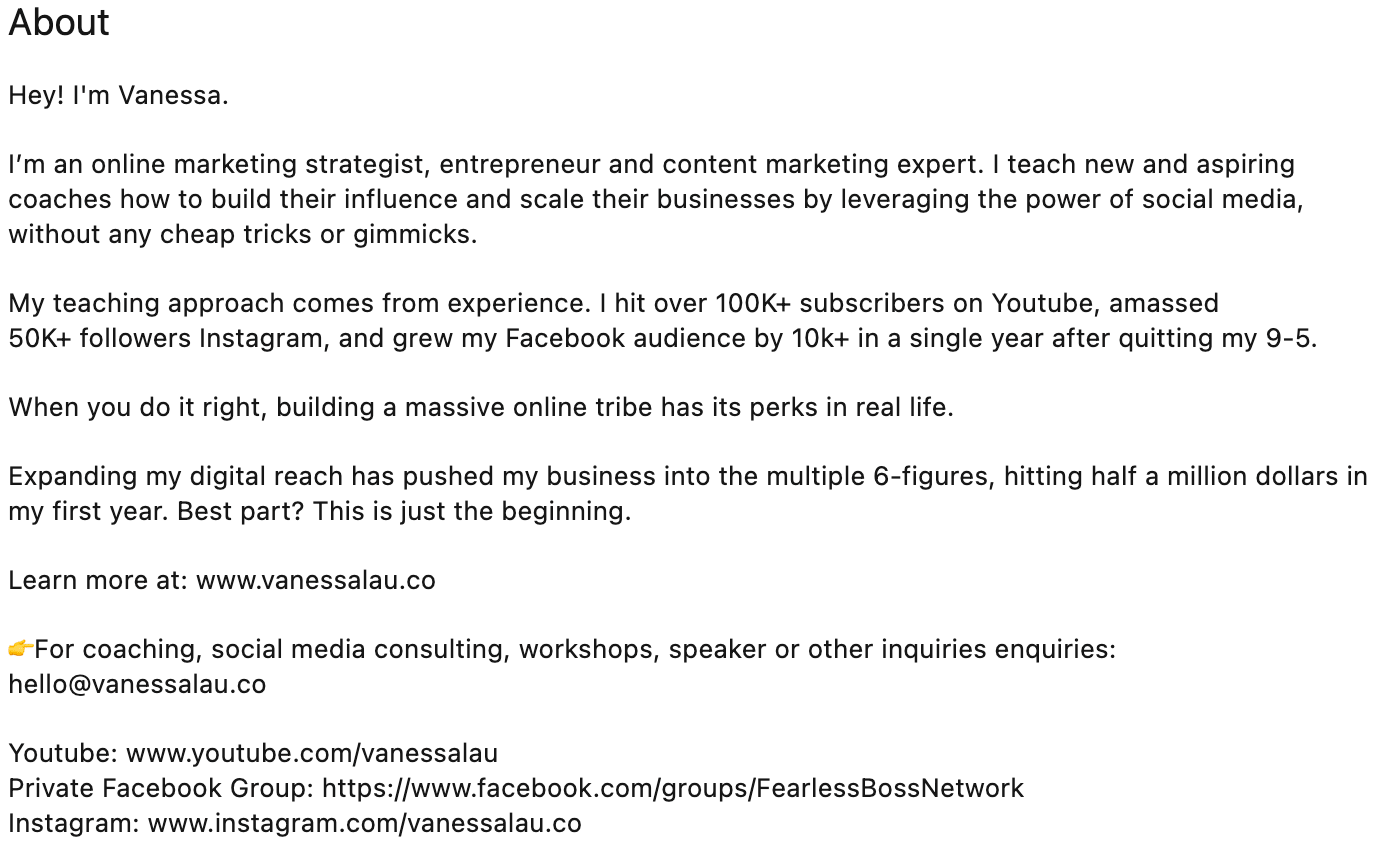
It’s a good idea to use the same username, or known variations of it, for all your social media profiles to help create a single social media personality. Knowem is a useful tool for checking which names are available on which social networks.
6. Invest time in coming up with an appealing “headline”
Your “headline” is a statement that summarizes your personal brand. On some channels, like LinkedIn, Twitter, and Facebook, you can include it in your banner image, as Amy Cuddy does here.

You can expand it in your Twitter and Instagram bio and even more in your Facebook About or LinkedIn profile section.
Some people like a “keyword headline” like Amy, which lists your main achievements, interests, or areas of expertise. Others prefer a “power statement headline” that expresses your vision and ideas as Eric Bandholz uses below.
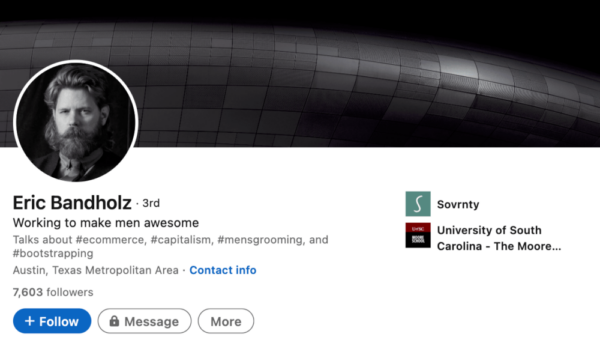
7. Be consistent
Deliver a consistent look and experience across all your profiles. Authenticity is most important when it comes to choosing who to trust on social media, and if your profiles, language, or style aren’t consistent, it undermines your authenticity.
Use the same profile and cover photos
That means using the same profile and cover photos, personal brand logo, and theme colors for each account. On Instagram, you might use the same filter for all your images, or post the same style of an image on Pinterest.
Maintain a consistent voice
You also need to hit on a single consistent “voice.” Of course, you should be yourself, but you might want to keep your wacky sense of humor for your private accounts and be a bit more serious about your personal brand.
For example, inspirational speaker and consultant Lolly Daskal has a consistent life coach branding voice on every channel.
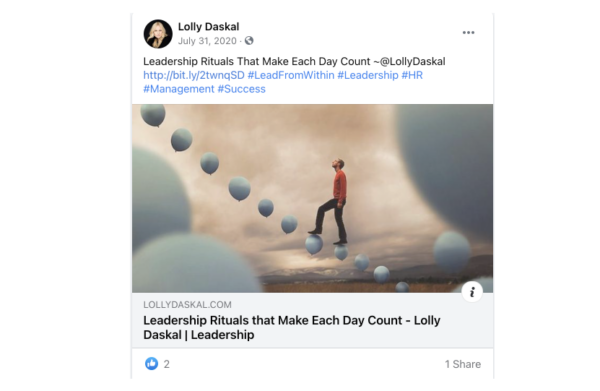
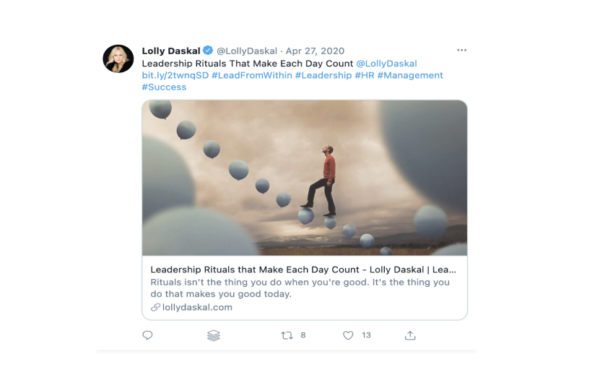
Be consistent with your post types
You should also try to stick to the same kind of posts, like text posts, videos, inspirational quotes, candid photos, long thought leadership pieces, etc. People will learn what to expect from you, and they’ll be disappointed if you don’t deliver. Marie Forleo’s life coach branding is very visual on social media, even on Twitter, with lots of inspirational quotes and videos.
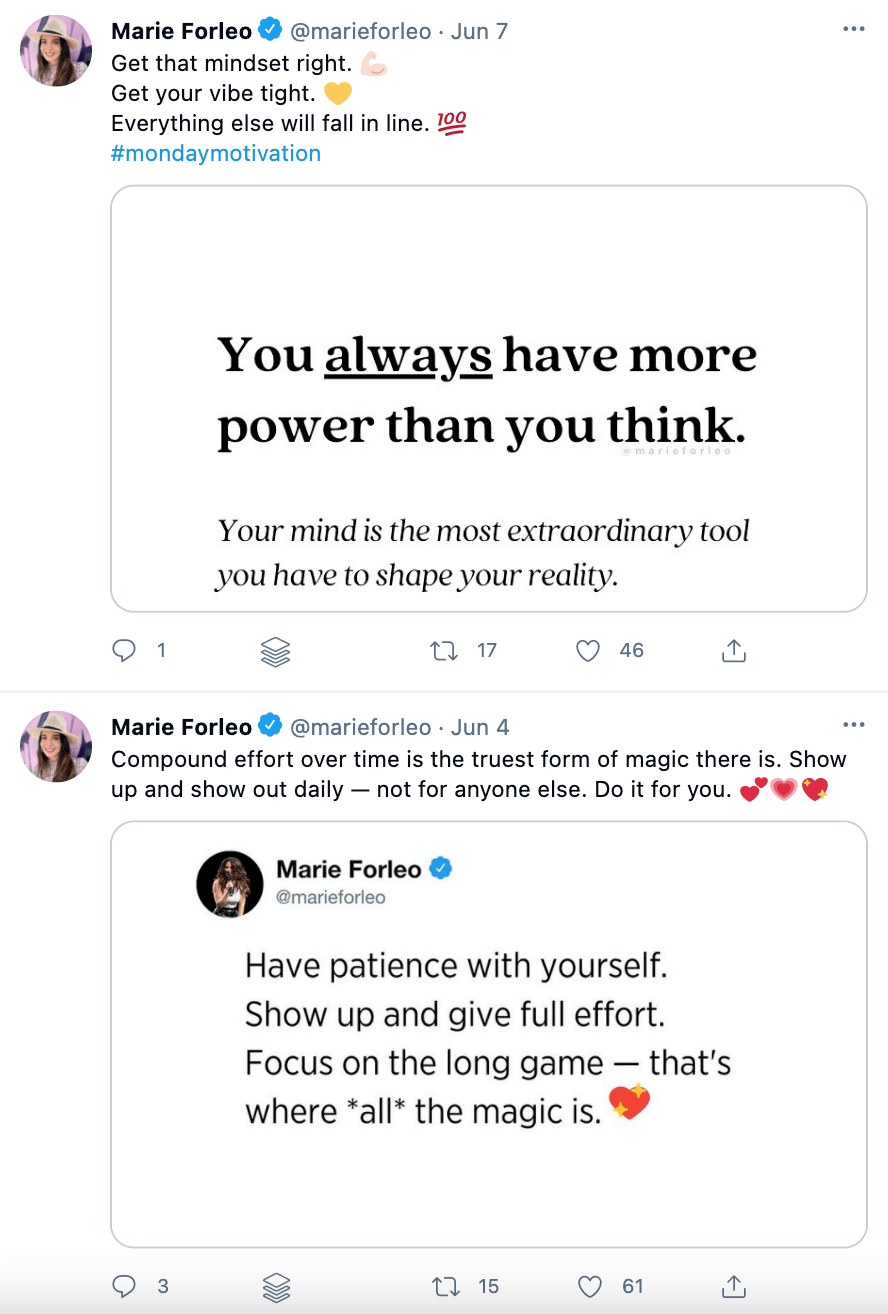
It’s ok to mix it up from time to time with something different, but your dominant style must be clear.
8. Import your contacts
When you’ve finished establishing your social media profiles and accounts, import all your existing contacts and connect with them on each channel. LinkedIn, Instagram, Facebook, and Twitter all allow you to import up to a maximum number of contacts for free from your Gmail or Outlook email accounts.
9. Connect your channels so people can easily find you
Since most people are active on more than one network, share information about your other accounts on each channel. Include your Twitter handle in your Facebook profile, your Instagram page on your LinkedIn profile, and your YouTube channel in your Instagram bio, so that people will know how to find your content on every platform.
Designer Charli Marie has links to her YouTube channel and podcast home on her Twitter bio, and ALL her social media links are easy to access on her personal website homepage.
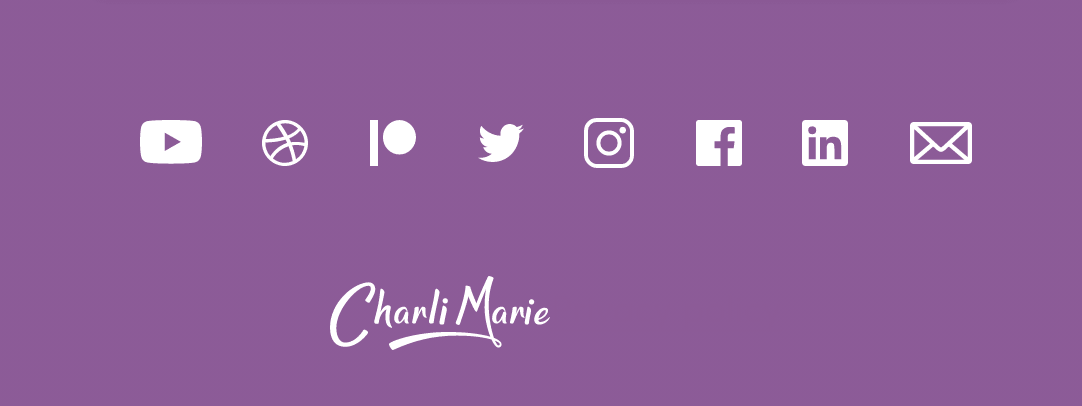
10. Commit to your posting schedule
Your followers get used to new material on certain days or at certain times, so make yourself a posting schedule — and stick to it. Schedules also make life easier for you, so you don’t find yourself suddenly panicking that it’s been 3 weeks since you last wrote an update.
Different channels have slightly different posting rhythms, so you’ll need to adjust your tempo according to the network. Here’s one suggestion for the best posting frequencies:
- Facebook – Twice a day
- Twitter – 5 times/day
- LinkedIn – 1 time/day
- Pinterest – 5 times/day
- Instagram – 1-2 times/day
You also want to post when your audience is online and available. You can follow advice for the best time to post to each platform, like posting between 11 am and 3 pm on Instagram, but it’s better to run your own experiments and see for yourself which times and days are best.
11. Automate posting to free up time for creative thinking
You can save time and make it easier to be consistent by using social media management tools like Buffer, Hootsuite, or Sprout Social to automate your personal branding strategy. This way, you can compose a whole week’s worth of content in one sitting, and then schedule your posts for the optimal timing on each channel.
12. Produce original content that re-enforces your personal brand
At the end of the day, your personal branding depends on the content you post. Share your own original thoughts, opinions, and experiences, and write long-form posts from time to time so you can explore issues and answer questions more deeply.
You want to build a brand that people can relate to, but you’ll never do that if you sit on the fence. 86% of consumers say they want business leaders to speak up more about important current issues, so don’t shy away from sharing your stance on BLM, climate change, or vaccines. Just make sure you’re also courteous to people who don’t share your position.
Do give people a glimpse into your personal life, like your travel, hobbies, or pets, but don’t overshare. People will unfollow you if you flood their feeds with too many social updates. Most of all, don’t overdo the selfies (unless that’s part of your personal brand)!
You can and should share other people’s content, but even so, it’s best to add your own introduction. Include a few words to tell your followers what made it catch your attention or touch your heart. It adds value for your followers, plus it helps them associate you with the other person’s useful content
Look at Greta Thunberg, a lifelong environmental activist that is not only creating original content that is meaningful but she is also not afraid to speak up about the current world crises. She is challenging the world and using social media to get her voice across.
“Our relationship with nature is broken. But relationships can change. When we protect nature – we are nature protecting itself.”
— Greta Thunberg (@GretaThunberg) May 22, 2021
Thank you @MercyForAnimals for sponsoring this film by @tommustill and me.#ForNature #BiodiversityDay pic.twitter.com/2tXPFaeqWq
13. Never stop engaging your audience
Personal branding on social media is like forging relationships with multiple people at speed, and you can’t expect to build a relationship if you’re the only one doing the talking. Reply to comments, answer questions, and even respond to criticism on your accounts (but keep it respectful).
It’s also a good idea to ask your audience questions too, like what they want to see from you and listen to their replies.
Gary Vaynerchuk has literally millions of followers, but he still replies to comments on his tweets whenever he can. One blogger tested Gary by DM-ing him on Instagram and got a response in 10 minutes.
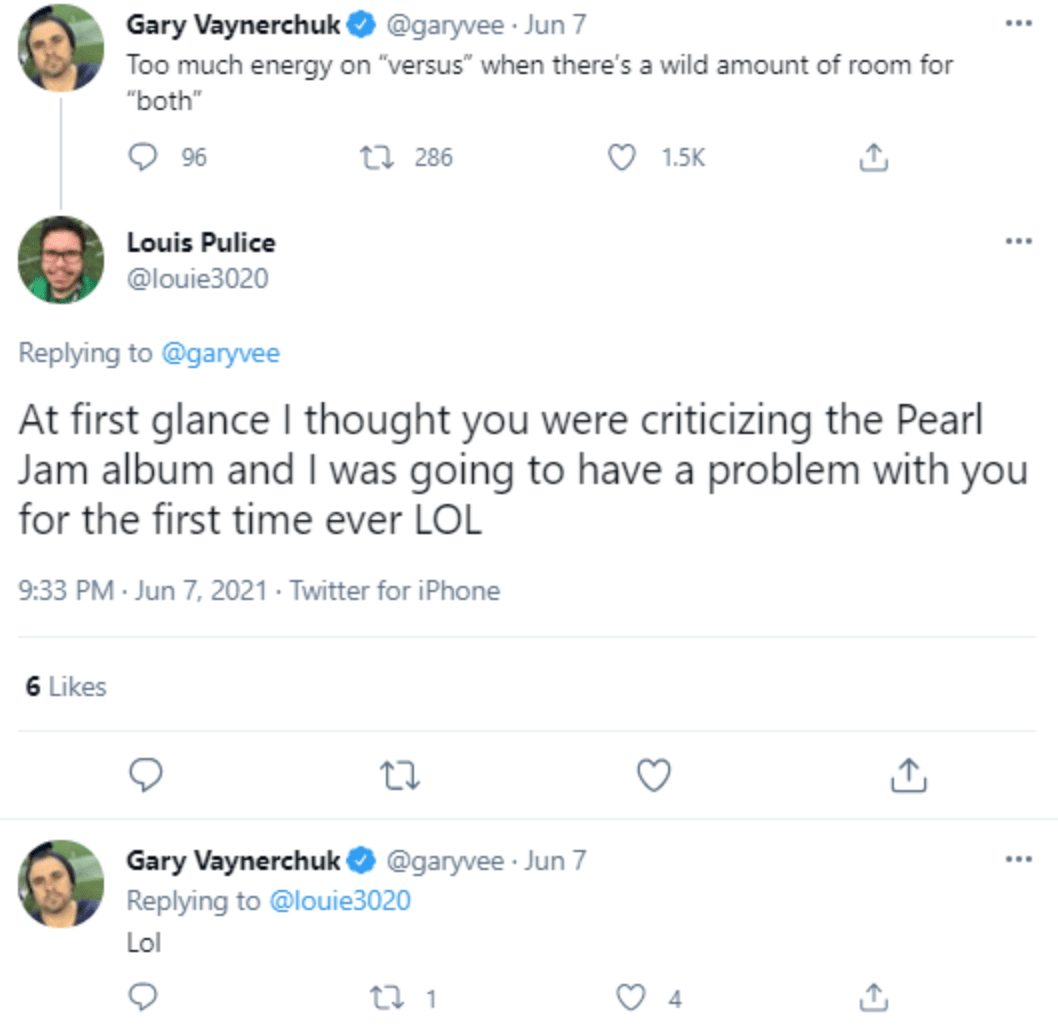
You can set up email or SMS notifications for most channels, to let you know when someone tags you, or use social media listening tools like Mention so that you can respond promptly. Ideally, you should reply to every message or tag within 24 hours.
14. Actively make connections to build your network
As well as posting content, you should also actively make connections. If you invite someone to connect with you, make it a personal message. If someone follows you on a social media channel, follow them back (it’s polite), but also go follow them on a different channel too, to get their cross channel to follow.
It can be worthwhile to connect with influencers, but only those that are in your field or connected to your brand in some way. Following 20 influencers just because they’re popular is transparent and makes you look needy. Instead, be like Jenny Blake, who uses her personal branding to elevate other entrepreneurs. It’s authentic, it builds a relationship, and it makes her more relatable, but it also boosts her following.
15. Get active in groups to establish a name for yourself
Facebook Groups are the best places to share your expertise and establish a name for yourself as a trustworthy voice because that’s where people go to look for help and advice.
Facebook Groups can be used for business marketing as well. If you establish yourself as an authority in these groups, you better position yourself to sell your consultancy, service, or product, once you get a business offer up and running.
Search for groups related to your field and look for threads where you can contribute something valuable to the conversation. Avoid anything sales like the plague!
Once you’ve built traction for your personal brand, you can open a private group to nurture your loyal community. For example, Vanessa Lau has a private Facebook group where she helps people with their social media marketing questions.

16. Analyze your efforts
You won’t know which content types are the most popular, which connections are most valuable, or which days of the week are best to post on if you don’t use analytics tools. Most social media automation tools include built-in analytics, so schedule a regular time to check your metrics and make adjustments.
What’s next for your personal branding strategy
As you succeed in your personal branding on social media, you’ll find that other opportunities start to appear for other personal branding verticals, like invitations to write a guest blog, speak at a conference, or take part in a podcast.
Although it’s tempting to accept everything, make sure to stick to your personal branding strategy. Only speak on topics that are within your area of expertise, and choose personal branding verticals that match your brand.
Personal branding can transform your business
When you succeed with personal branding on social media and other personal branding verticals, you’ll open up a whole new world of opportunities to attract customers, forge partnerships, and grow your business in the right direction.
The benefits of personal branding on social media
- Build new connections and networks. Today’s relationships blur the boundaries between online and offline worlds, especially within the “COVID year” when everyone was working from home (with very few boundaries) so the better your online profile, the stronger your offline one will be, too.
- Attract new clients, customers, and partners. People want to do business with other people – those they know and trust – not faceless companies or organizations. Maintain your personal brand at all times – on your personal social media feeds, at networking events, at the grocery store, even when you’re playing golf with friends.
- Discover speaking opportunities. Personal branding on social media is a stepping stone to other personal branding verticals, where people want leaders who are well-known in their niche.
- Boost your credibility and authority. A strong personal brand encourages people to view you as an expert in your field.
- Earn recognition and trust. People trust individuals far more than businesses, so when you’re well known as an individual, it will increase the trust they feel toward your business.
- Establish an association with your niche. When you get personal branding right on social media, you’ll ensure that people think of you as soon as they think of your vertical.
- Increase your perceived value as a business person and thought leader. Strong personal brands command a lot of attention, so people will be eager to connect with you to tap into your crowd.

